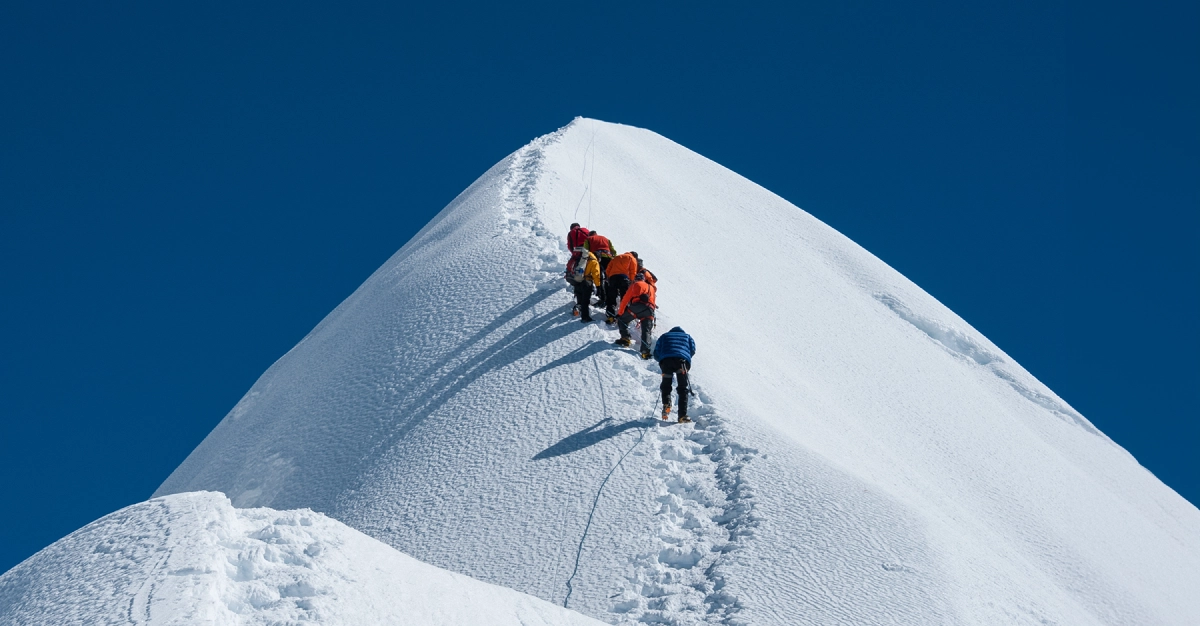Norgay & Hillary & Messner & Pal & the Freshworks Cybersecurity Team
Insights from the summit: How a virtual climb up Mount Everest informs making better team decisions for Freshworks CISO Jason Loomis
You might think, “One of these things is not like the other.” But what do these five have in common? They’ve all summited the highest peak in the world, Mount Everest. Now, before you start shopping for ice axes and carabiners because you think Freshworks has gotten into the mountain climbing business, I should add that the Freshworks cybersecurity team summited virtually.
But as the instructor of this simulated virtual Everest climb, I can attest that the air does indeed get thinner the more you immerse yourself in the climb.
Why is the cybersecurity team virtually climbing Mount Everest? Answer: as an introduction to how high-functioning teams work together, how to make better team decisions, and how to be better leaders. As for how we do it, I’ll get into that below.
As a chief information security officer (CISO), I firmly believe that the cybersecurity profession and industry consistently prioritize the wrong things, so much so that I host a podcast on this exact topic.
The questions I’m asked usually fall into this vein: What tools are you using? What are the most valuable assets in your organization? What are we doing about LABRAT/MOVEit/ChatGPT/<insert latest Wall Street Journal news article/Twitter-X feed about cybersecurity here>?
You know what question I have never been asked as a CISO? How does your team make decisions?
This is the most important question to ask as both a leader and a team because how your teams make decisions is more important than the decisions themselves. It’s a leadership mantra, slogan, and brand that I live by. I'm such a fan of this idea that I even considered getting a tattoo—but a stern "hell no" from the wife kiboshed that idea.
How your teams make decisions is more important than the decisions themselves.
Climbing Everest is an interactive introduction to this concept of group decision-making. The simulation is based on the ill-fated 1996 climb made famous in the book “Into Thin Air” and was created by the co-author of the famous Harvard Business Review case study. The (simulated) climb highlights multiple cognitive biases that can interfere with good decision-making, the importance of leadership, and the idea that each and every team member's contribution to the decision-making process is vital to the team's success.
But as Jedi Master Yoda might put it, “One climb does not a high-functioning team make.”
Climbing Mount Everest is just the beginning of the journey to becoming a high-functioning team. Oh, and an equally important concept to remember: It’s not an end state. We don’t wake up one day, score the goal, spike the ball, the game is over, and we’re suddenly and foreverly a high-functioning team. (Yes, I’m aware that foreverly is not a word, and I had to bribe the editors to allow it ’cause who doesn’t like a good rhyme?)
Becoming a high-functioning team takes a lot of initial effort and constant maintenance. You need to put in enough work that it becomes part of the culture and your muscle memory. Yoda knows—you don’t just climb one mountain, go through a trust fall or two at an offsite, and voila, your team is set for success. It takes repetition, repetition, and practice.
The Everest climb is a primer for a broader cultural shift to team-focused decisions. We take this climb and apply frameworks like “The Five Dysfunctions of a Team,” then dig into case studies. I’m a huge proponent of case study approaches to team-building and leadership because they are tangible, pragmatic, often based on peer-reviewed research, and, most importantly, stories at heart. And if you know anything about human beings, storytelling is fundamental to understanding human behavior and key to passing down knowledge, history, and culture (there’s that word again). In our team-building, we work on case studies throughout history, from Pope Leo X to JFK to Google.
How can your team start its journey to better decision-making? Go climb a mountain, open “The Five Dysfunctions of a Team,” and ask your HR business partner for help. Because how your teams make decisions is more important than the decisions themselves.
We want to hear from you! Please send us your feedback, and get informed about exciting updates from The Works. Drop us a line: theworks@freshworks.com
